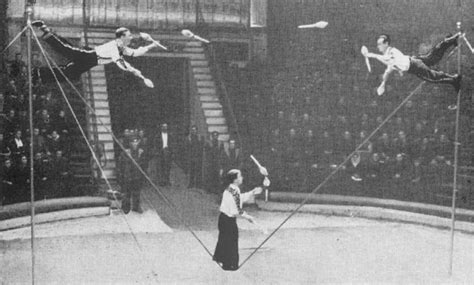Schedule
Schedule¶
Daily schedule of classroom sessions.
Complete homework (listed in the Assignments column) before class starts on that day.
The Pages column contains links to materials we will use during class that day and are not part of the homework.
Mondays are marked by bold font.
Date |
Topic |
Assignments |
In-Class Page(s) |
|---|---|---|---|
Jan 30 |
Welcome and Introduction |
none |
|
Jan 1 |
Movement |
||
Feb 6 |
Anatomy |
||
Feb 8 |
NeuroMuscular Coding |
Rate Coding and the Control of Muscle Force (click on either the full text or pdf link to read) |
|
Feb 13 |
Movement Control: Antagonistic Pairs |
Neuronal control of leech behavior: Figure 1, Figure 2, Section 3.2 Local Bending (including section 3.2 Figures); |
|
Feb 15 |
Cells Types and Circuits |
The first two sections (“Cell Types” and “Manual Database Exploration”) of the Cell Types Interactive Notebook; |
|
Feb 20 |
Strength |
The brain can make you stronger; |
|
Feb 22 |
Movement Control: Motor Cortex |
On the relations between the direction of two-dimensional arm movements and cell discharge in primate motor cortex. Focus on the following sections: Abstract, Introduction, Methods “Data Analysis” first two paragraphs (we will cover equations 1 and 6 in class), Results “Behavioral Data” “Quantitative studies: Relations to the direction of movement” “Relations between the frequency of discharge and direction of movement: Directional tuning curve”, and Discussion; |
|
Feb 27 |
Action Control: CPGs |
Central pattern generators and the control of rhythmic movements (stop before “neuromodulators”); |
|
March 1 |
Action Control: CPGs |
Central pattern generators and the control of rhythmic movements: “Coupling and Coordination” (pages R991-993); |
|
March 6 |
Action Control: Brainstem |
A functional map for diverse forelimb actions within brainstem circuitry |
|
March 6 |
Editorial DUE 11 PM |
Basic Movement Control |
|
March 8 |
Orientation and Action Selection: Tectum |
The tectum/superior colliculus as the vertebrate solution for spatial sensory integration and action sections: The tectum/SC’s intrinsic networks and their computations (The tectum/SC’s conserved laminar structure and The lamprey tectum’s sensory and motor maps and circuit mechanisms) , Sensorimotor transformation, premotor outputs, and behavior selection, and Conclusions and future directions; |
|
March 11-26 |
Spring Break |
||
March 27 |
Dealing with High Dimensional Data |
(Get a gist of this material and we will look at them together as well) |
|
March 29 |
Action Selection: Leech Swim/Crawl |
Optical Imaging of Neuronal Populations During Decision-Making |
|
April 3 |
Action Selection: Amygdala |
Integrated Control of Predatory Hunting by the Central Nucleus of the Amygdala |
|
April 5 |
Action Control: Motor Cortex |
Neural population dynamics during reaching (SKIP “Population-level quantification”); |
|
April 10 |
Action Control: Motor Cortex |
Motor Cortex Embeds Muscle-like Commands in an Untangled Population Response(SKIP the following sections of Results (spanning pg 960-962): “Hypothesis-based predictions of neural responses”, “Alternative Predictions”, “Signals Introduced by optimization yield incidental correlations”) |
|
April 12 |
Action Control: Spinal Cord (high D) |
Neurons that control walking go round in circles; |
|
April 17 |
Basal Ganglia and Cerebellum Introduction |
||
April 19 |
Action Sequencing: Basal Ganglia |
Optogenetic Editing Reveals the Hierarchical Organization of Learned Action Sequences |
|
April 24 |
Action Sequencing: Basal Ganglia |
The Striatum Organizes 3D Behavior via Moment-toMoment Action Selection sections: Summary, Intro, Results (introductory paragraph), Pathway decorrelations facilitate behavioral encoding and decoding, Figure 3, Sequence-specific neural representations for syllables, Figure 4, The DLS is required for moment-to-moment action selection, Figure 7, and Discussion |
|
April 24 |
Editorial DUE 11 PM |
Basic Action Control |
|
April 26 |
Coordination: Cerebellum |
||
May 1 |
Context: Cerebellum |
Learning to expect the unexpected: rapid updating in primate cerebellum during voluntary self-motion |
|
May 3 |
Movement Effects on Sensory Systems |
How do fish make electricity?; |
|
May 8 |
Movement Effects on Sensory Systems |
Perks and Sawtell 2019 pg 327-330 (section 11.5) |
|
May 10 |
Wrap Up |
||
May 16 |
Editorial DUE 11 PM |
Beyond Basic Control |
May 11-15 Reading Period May 16-19 Final Exam Period
